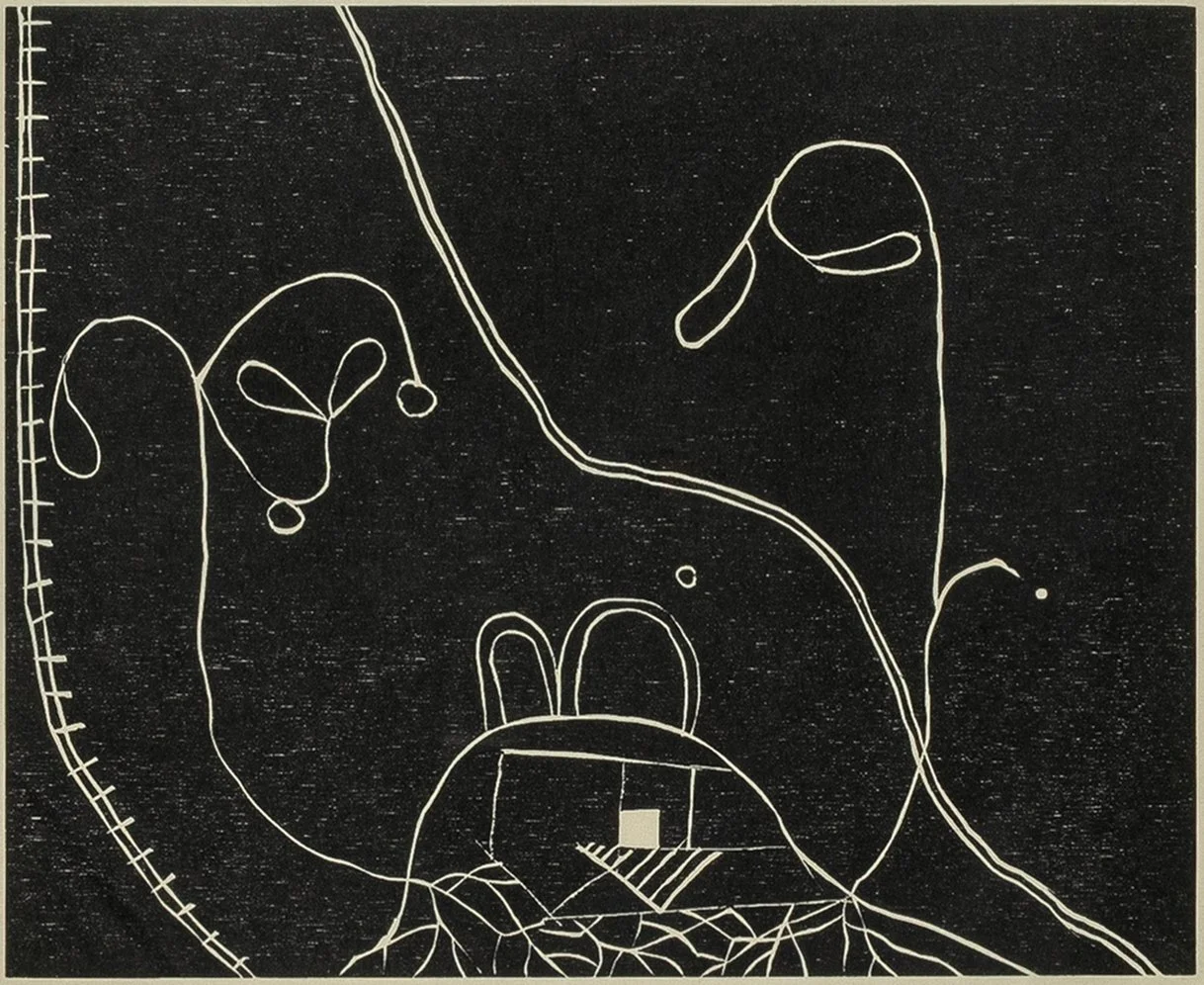
Martin
Puryear
(b. 1941)
“Puryear first read Cane while he was teaching at Fisk University, in Nashville, his first experience living in the south. He said that he related to the point of view of a visitor ‘looking at what so defines blackness in America, the agricultural life of the South, the sharecropping that had grown out of slavery.’
About his work for the project, Puryear has commented: ‘The overriding issue was to work in a two-dimensional medium. To make flat images is such a departure from what I do as a sculptor. I had seldom made woodcuts since my student days. The challenge was to create a set of images that would relate together in a familial way, suggestive of the narrative but not overtly so.’”
Becky (from Cane)
2000
woodblock print on cream Japanese handmade paper (katakana)
10 3/8 x 12 3/4 inches (image)
16-3/4 x 20-1/2 inches (sheet)
signed, titled and numbered 13/50
Donald Young Gallery label verso
REF: Martin Puryear: Multiple Dimensions, Art Institute of Chicago (2015), Mark Pacale, p. 110 (catalog accompanying the exhibition).
Puryear created a suite of woodcuts inspired by characters and episodes from the book, Cane, by Jean Toomer. This book is a landmark of American modernism and a cornerstone of the Harlem Renaissance. Blending poetry, prose, and drama, the book depicts the lives of African Americans in both the rural South and the urban North.
Martin Puryear (b. 1941) is one of the most acclaimed American sculptors of his generation, celebrated for work that balances craftsmanship, abstraction, and profound cultural resonance. Born in 1941 in Washington, DC, Puryear had aspirations of becoming a wildlife illustrator as a youth. He became a skilled woodworker, a skill that would prove essential to his practice.
Puryear studied at Catholic University before serving in the Peace Corps in Sierra Leone, as a teacher of French, English, and biology (Puryear actually entered college as a biology major), between 1964 and 1966, an experience he considers among the most important in his life. Here, he made detailed drawings of everything around him, flora, fauna, and people, and experimented with woodcuts.
Puryear also spent two years studying printmaking (etching, aquatint, and drypoint) and sculpture at the Swedish Royal Academy of Art in Stockholm. By the time he entered the graduate art department at Yale, he was determined to concentrate on sculpture. He taught at Fisk University, Nashville; University of Maryland, College Park, MD; and the University of Illinois, Chicago.
In 1982, he received a John S. Guggenheim Memorial grant, which he used to travel to Japan, where he steeped himself in the timeless traditions of Japanese craftsmanship.
Puryear’s sculptures, deceptively simple and sometimes monumental in scale, combine pure craftsmanship with deeply personal introspection. The imagery in his prints echo the same sensibilities as his sculptures, albeit in two dimensional form, consisting of “private narratives including those of the artist, race, ritual, and identity.” His work resides in the collections of the Museum of Modern Art, the Art Institute of Chicago, and the Smithsonian American Art Museum, among many others.
REF: Golden, Deven K., ed. Martin Puryear: Public and Personal. Chicago: Chicago Public Library Cultural Center, 1987
“Puryear’s abstract forms, while evocative and familiar, elude specific or singular interpretations. In his work, motifs such as the Phrygian cap, human heads, and vessels take on symbolic resonance, functioning as meditations on powerful universal concepts like freedom and shelter, even as they are distilled by the artist into essential forms.”
Martin Puryear, in his own words.
Artist Conversation: Martin Puryear and Theaster Gates, 2016
Note: Fast forward to 4:50 for the conversation.
untitled
1987
coated bronze
18 x 14 x 10 inches
edition of 5

Selected
Exhibitions
Directions in Afro-American Abstract Art, Carl Van Vechten Gallery, Fisk University, 1982
Traditions and Transformations: Contemporary Afro-American Sculpture, Bronx Museum of the Arts, NY, 1989
Narratives of African American Art and Identity: The David C. Driskell Collection, University of Maryland Art Gallery, College Park, MD, 1998
MARTIN PURYEAR: The CANE Project, Studio Museum in Harlem, NY, 2000
MARTIN PURYEAR, Museum of Modern Art, NY, 2007-08
MARTIN PURYEAR Prints, M.H. de Young Memorial Museum, San Francisco, CA, 2009
Martin Puryear: Multiple Dimensions, Smithsonian American Art Museum, Washington, DC, 2016
Martin Puryear: Process and Scale, Storm King Art Center, NY, 2023
Martin Puryear: Nexus, co-organized by the Museum of Fine Arts, Boston, and the Cleveland Museum of Art, with additional presentations planned at the High Museum of Art (Atlanta), September 27, 2025 – February 8, 2026